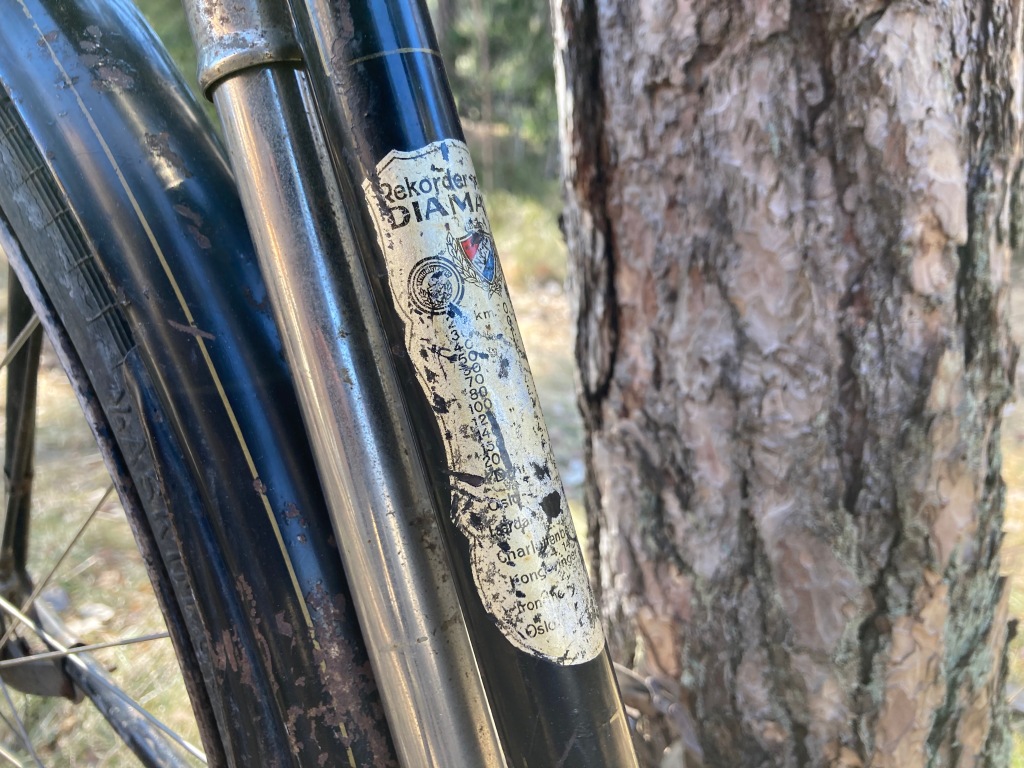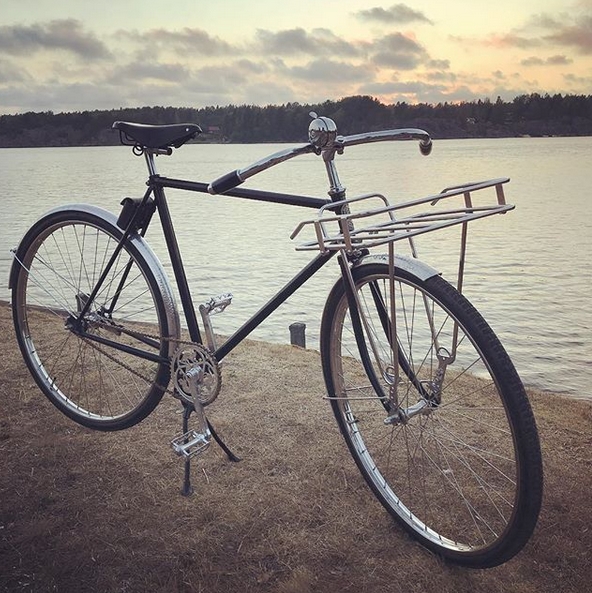Typewriters have always been a part of my life. For example, the first typewriter I encountered was my grandmothers old Swedish Halda. It was large, heavy and painted in the typical green hammerite colour that was popular in the early 1940´s. It was a really nice machine that had been around for quite a while, and for me as a kid it was a impressive machine with all levers, knobs and shiny parts. After a few years my grandmother decided she did not have any need for the old typewriter any more so she gave the old Halda typewriter to me. Suddenly, 12 year old me was owner to my very first own typewriter.
Today I realize that it was a rather fatal mistake to give a 12 year old kid an machine like that. A 12 year old that owned a screwdriver, ready at his disposal with an interest in technical gadgets and machinery. After a few weeks of writing notes and having the machine as decoration. I decided to see if my screwdriver fitted onto the screws of the machine. It took me about 30 minutes until the entire Halda was completely dismantled, down to its smallest component. One hour after that, the old typewriter was in the trash bin.
From that day I had a fascination about typewriters. Preferably the old ones made in metal with their design and function, all levers that were connected to different rods and springs. My mother, who had attended secretary school sometime in the 1960´s, owned a grey 1970’s plastic typewriter that I was not allowed anywhere near with my screwdriver and curious mindset. But my mothers typewriter did not attract me, it felt – plastic, not genuine, almost modern, in a odd way.
Typewriters became a part of my life in another way to. When I was in 6th grade, we had typewriting lessons on the schedule in school. We were a group of kids trying to figure out our fingering – our placement of our fingers on a typewriter keyboard. We had to learn to write on keyboards, it was mandatory. I guess no one of the kids was paying much attention at those lessons. Neither did I, since I even today can not use the correct fingering on the keyboard. In fact, my writing skills and speed reminds more of an old police constable writing a report in a 1950’s movie. Slow and steady so to speak, not always correct, but still. We had to sit in class, lesson after lesson, fingering the old Adler typewriters without any symbols on the keys. We were supposed to find our way without looking at the keyboard. Not the most exciting exercises for children.
I guess the reason for the typewriting lessons in school was that back then, people received and sent official letters and forms to and from government officials and other red tape departments. All official letters that were written on typewriters in those days. They were most likely written by grey bureaucrats in grey suits, hammering away grey letters on bulky grey typewriters in the clinical light of fluorescent lights, casting with grey shadows on the walls. Sweden was like that once, grey and filled with typewriters. You had to use a typewriter in conversations with the bureaucracy, hand written letters will simply not due.
Many years later when I was a adult, I visited a second hand shop for vintage technical gadgets. There were an entire bookshelf filled with vintage typewriters. Since my own hand writing had more and more started to resembled the handwriting of a doctor riding a roller-coaster. I thought that buying an old typewriter rather cheep, would be a nice aid for me in my writing. I looked at all the machines in the shop they all were rather cheep, since no one wanted those old relics any more.
The typewriter I chose was an Royal, manufactured in New York back in the 1930’s. It was a all metal machine in a glossy black finish with shiny stainless steel parts. After bringing it home and preforming some service to it, the old machine worked like a charm. I started to write short stories and journals all the time just for fun. Since the personal computer had just recently made it’s entry on the scene, I used the old typewriter less and less. Few years later there was a young girl who loved old things, so I simply gave her the old machine, she was happy as could be and everything could ended there.




Fast forward many years until the time I started attending Urban Adventure Leagues different bicycle challenges, such as Midnite Bicycle League challenge. It was then I realized that I could not use my computer to fill out the physical journals that was included in the challenges. My hand writing skills had not improved at all in the last 20 years. Once again I needed a typewriter, after asking my mother if she still had her old plastic typewriter, I got the vague reply that she hardly remembered that she had owned a typewriter at all.
That was when I got the brilliant idea of checking out different auction sites. Suddenly, there were heaps of old typewriters to choose from. Everything form the green Swedish Halda´s, pink Italian Olivetti´s , new and old typewriters, large and small. Among all odd typewriters I even found a old Royal typewriter for sale. Not quite the model I bought many years ago, but a better one, the fancy Deluxe model with a chromed decoration trim and painted in crimped black finish. I placed a bid on the auction and some days later I won. €30 for a nice old machine, complete with case, manuals and an original brush.
After some dusting, cleaning, brushing, wiping and polishing the Royal Deluxe from 1938 was working like a charm. Of course there are some issues with such as keys sticking and finding cigarr ashes inside the machine. But to be honest, what is there to expect from a typewriter that had been used since 1930’s. Now I could fill out the Urban Adventure Leagues bicycle challenge journal so my notes were readable. Besides, I realized that it was rather fun to write on a typewriter again.
There is something satisfying by pressing down a key, feeling the rods and springs throw the type-bars on to the paper and by pressing a coloured ribbon on to the paper, printing a letter. Everything in one single swift motion. I still had some envelopes in a drawer from the time I worked in an office back in the early 1990’s, so why not writing a letter? I loaded the machine with a fresh paper and started hammering away.
It did not end there, I started to look for a spare machine, an backup typewriter. On the same auction side I later found an 1960’s Swedish made Facit, made by the same manufacture as Halda, but a bit more modern. This typewriter is a technical masterpiece. It is very advanced and well designed with its all it’s features. There is the automatic direction shifter on the colour ribbon, several settings for stops and tab distance. The plastic buttons on the keys are more ergonomic, the smaller font on the type-bars are more clean and less fancy and so on. Sadly the machine, it’s hood, case and cabinet is all in a bureaucrat grey shade so by using it I feel like one of these grey bureaucrats from back in the day.




To really emphasis the bureaucrat feeling, I even ordered a rubber stamp with a logo to stamp on to the letters. Then we have the question of what to use as postage? Well, of course the old stamps from our stamp collection that we all started when we were kids. Stamp collections that have been collecting dust in a drawer for the latest 40 years. The stamps are still valid after all those years, it is simply a matter of adding up the postage to the correct amount and post the letter.
I can not believe what an impression my letters made. The analogue letters brought smiles to the recipients. It turns out that today, in this digital era it can be nice to sometimes take a break from all electronic and simply open and read a letter.
Every day we are bombarded with more and more digital information of all sorts. There we are, surrounded by all this electronic, trying to cope and find some balance in not being uneducated about the latest trends floating around internet and social media while simply trying to breathe.

I have found that in this hectic digital age, it is relaxing to dust off an old 78rpm record, crank up the spring on the gramophone and listen to music. Typing letters on an old typewriter and just bring down the speed of everything. Making time, to take time. It is good to take it slow sometimes. To be honest I even looked up a “postage-box” so all my bicycle and photography correspondence could be in the letter format. Just to make a statement of taking it easy.
Sadly a postage-box today is really expensive, then it becomes a question of priories. But who knows, maybe it could be an investment? After all I was really inspired by the statement of The Tweed Cycling Club contact information, “If you have sent correspondence in the past six months and have not received a response, please be forgiving. The Secretary has been somewhat distracted of late“. Just keeping it analogue, writing a newsletter as back in the days. Print it and send it to those who are interested and letting it to take time. Just as back before we all had mobile-phones, computers and internet.
In the end, that is what i is all about. Tweed rides, typewriters, analogue cameras and the spirit of the olden “digital free” days. It is to reduce the tempo, things do not need to happen right away. Just like riding vintage bicycles when riding upright and enjoining the scenery around you. Stopping for a while, having a rest, a cup of tea and listening to the chirping birds.
Letting go of all electronic shackles and the pressure of the modern world for a moment. Just by simply writing a letter will make you reduce stress and disconnect your mind for a while. It can not be that bad?










































